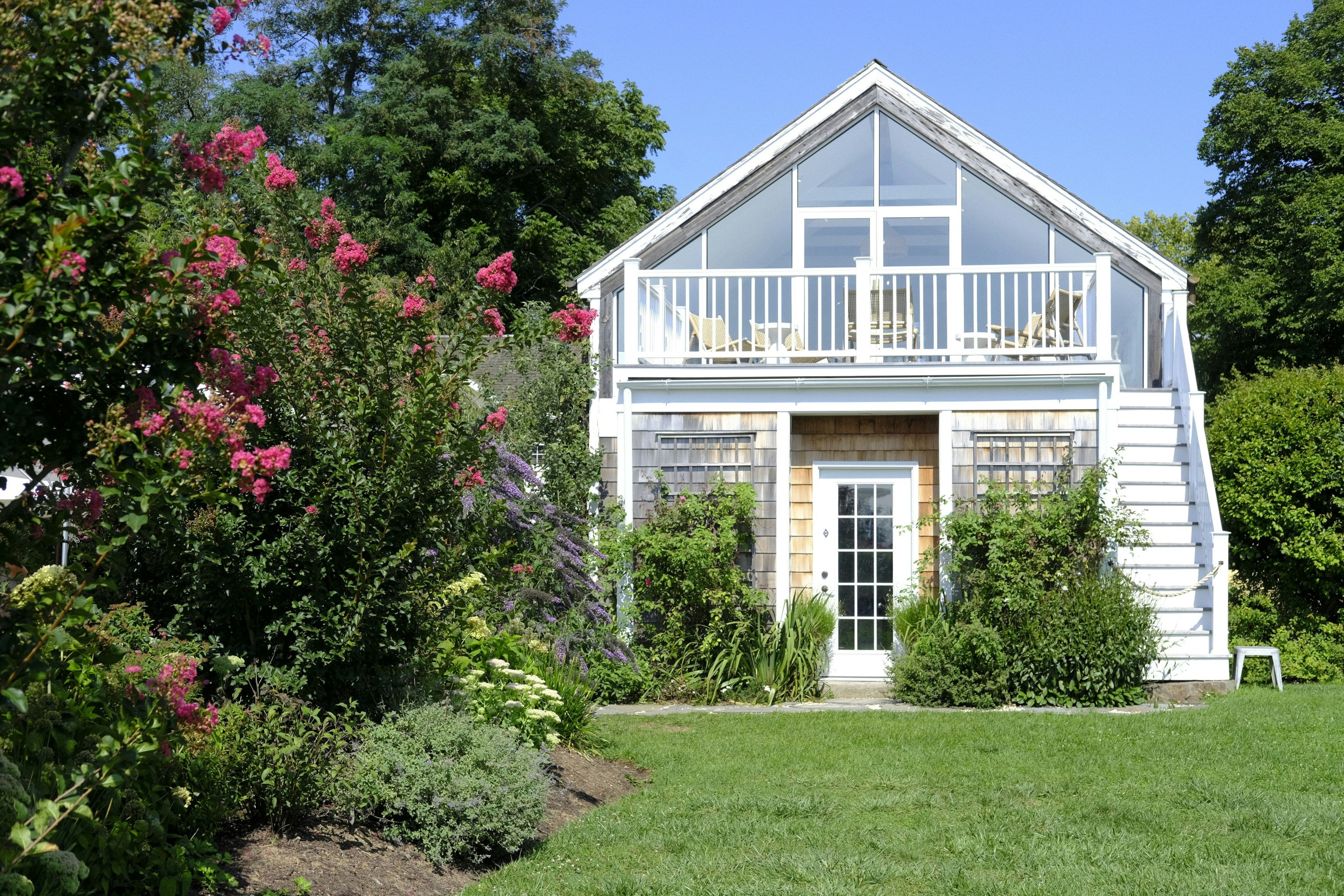ADU for Investors: The Ultimate Wealth-Building Guide for 2025 and Beyond
Introduction to ADUs
Accessory Dwelling Units (ADUs) have evolved from niche housing solutions to mainstream investment strategies. For real estate investors, ADUs are income-producing assets that boost cash flow, property value, and long-term wealth. They generate extra rental income and complement the primary home by expanding its functionality. Think of an ADU as a built-in rental property without the cost of new land. ADUs can be attached or detached from the primary residence and serve as independent living spaces for tenants or family members. By adding one to an existing property, investors multiply income streams while maximizing land use. ADUs can also be created by converting existing structures or spaces, such as garages or basements. They offer additional living space, can be used as home offices, or serve as guest houses. With rising housing affordability challenges, ADUs are among the most in-demand solutions for tenants and investors.

Types of ADUs Investors Should Know
Detached ADUs
A detached ADU is a stand-alone structure, typically built in a backyard or side lot, that provides residents with their own space and a separate entrance for maximum privacy and independence. These are the most independent type of ADU, often designed like a small single-family home. They offer the highest rent potential and appeal strongly to tenants seeking privacy.
Attached ADUs
These share a wall with the main property, similar to a duplex extension, and can often be created by converting an existing structure such as a garage or basement. While cheaper to build than detached units, they usually rent for slightly less since privacy is limited. Still, they're a great way to add livable space quickly. Attached ADUs can also enhance property value by increasing usable living space.
Garage Conversions
A garage conversion is a cost-effective type of ADU that utilizes existing space, as the framework already exists. Investors can transform unused garage space into studio or one-bedroom apartments. In urban markets, garage conversions are especially valuable where housing demand outpaces supply. When undertaking a garage conversion, it is crucial to comply with local zoning regulations and building codes to ensure the project is legal and successful.
Basement ADUs
Basement conversions, often referred to as creating a basement apartment, are common in high-density cities. When finished properly with separate entrances and safety features, they provide affordable housing while generating solid returns for investors. It is important to ensure compliance with local zoning laws and building codes when converting a basement into an ADU.
Benefits of ADUs for Investors
Increased Rental Income
Adding an ADU can generate monthly rent and provide expected rental income for investors, ranging anywhere from $800 to $2,500+ per month depending on the market. This extra income can offset mortgage payments or fund additional investments. ADUs can also serve as additional rental units, increasing overall property revenue.
Boosting Property Value
Properties with ADUs sell at a premium, especially in competitive markets where homes with additional living spaces tend to attract more buyers and command higher prices. Buyers recognize the built-in rental potential, making them more attractive than traditional single-family homes. Additionally, ADUs can increase the value of investment properties and make them more appealing to buyers seeking to maximize rental income and long-term returns. For tips on knowing how to estimate your property value, see How to Estimate Property Value: A Complete Guide for Homeowners and Real Estate Investors.
Tax Incentives and Deductions
Investors may qualify for accelerated depreciation, construction-related deductions, and even energy-efficiency tax credits when building ADUs. However, investors should also consider the potential impact of increased property taxes when adding an ADU, as this can affect the overall cost and long-term profitability of the project.

Long-Term Wealth Building
Unlike short-term flips, an ADU investment helps investors create lasting cash flow and equity growth—key ingredients in building generational wealth. Before starting an ADU project, it is essential to conduct a thorough cost benefit analysis to evaluate both the upfront expenses and the long-term financial returns.
Costs and Financing Options
Financing Through Home Equity
Homeowners can tap into equity through HELOCs (Home Equity Line of Credit) or cash-out refinancing, making it one of the most affordable funding options. Some home equity products, such as HELOCs, offer interest only payments during the draw period, which can help manage cash flow during construction.
Construction Loans and Hard Money
For those without equity, construction loans or hard money lenders provide flexible but higher-interest financing, and are often used for investment property projects. These are useful for quick builds or competitive rental markets. Interest rates for these loans are typically higher than traditional financing.
Partnerships and Creative Financing
Partnerships and creative financing are often used to fund an ADU project on investment properties. Some investors split costs with partners or explore joint ventures. For example, a homeowner might allow an investor to fund construction in exchange for rental revenue sharing. To learn more methods that real estate investors often use for financing their properties, see Creative Financing for Real Estate Investors: Top Tips to Save Money.
Regulations and Zoning
State and Local Laws
ADU laws differ across the U.S. States like California, Oregon, and Washington lead the way with favorable ADU policies, and Oregon has specific owner occupancy requirements for ADUs. Other states are just beginning to relax restrictions.
Common Zoning Restrictions
Minimum lot size requirements
Owner-occupancy mandates
Parking minimums
Height and square footage limits
Local zoning laws and local zoning regulations that may affect ADU development, including restrictions on size, placement, and use.
Permitting Process Simplified
Permitting fees and compliance with building codes are important parts of the permitting process. More municipalities now offer pre-approved ADU blueprints and streamlined applications, cutting down both cost and time. This is especially true in cities with housing shortages.

Rental Strategies for ADUs
Long-Term Rentals
Long-term rentals offer steady and predictable income with generally lower tenant turnover, making them a reliable choice for investors seeking consistent cash flow. ADUs rented on a long-term basis appeal to a wide range of tenants, including young professionals, retirees, and small families who are looking for affordable and comfortable housing options. This rental strategy provides stability and reduces the frequency and costs associated with tenant turnover.
Short-Term Rentals (Airbnb/VRBO)
In cities with high tourist traffic or strong short-term rental markets, using an ADU as a short-term rental can generate two to three times more monthly income compared to traditional long-term leases. This approach allows investors to capitalize on peak demand periods and premium rental rates. However, it's important to be mindful of local ordinances and regulations, as many cities have restrictions or licensing requirements for short-term rentals that could impact profitability and legal compliance. For tips on running a profitable short term rental property, see The Pros and Cons of Short Term Rentals: A Comprehensive Guide.
House Hacking with ADUs
House hacking is a popular strategy where investors live in one unit of their property while renting out the other ADU unit. This approach significantly reduces personal housing expenses by offsetting mortgage payments and other costs with rental income. Additionally, house hacking allows investors to build equity in their property over time while gaining firsthand experience managing rental units. It's an attractive option for those looking to enter real estate investing with lower financial risk and greater control over their investment.
Risks and Challenges
Upfront Costs and Delays
Obtaining permits, navigating labor shortages, and coping with rising construction costs can all contribute to project delays and increased expenses. These factors not only extend the timeline but also impact the overall return on investment (ROI), making it crucial for investors to plan carefully and build contingencies into their budgets.
Market Risks and Vacancy
Fluctuations in rental demand can pose significant risks to ADU owners. If the local rental market softens or competition increases, keeping units consistently occupied may become challenging. Conducting thorough market research and understanding local rental trends before building can help mitigate vacancy risks and ensure steady cash flow.
Property Management Challenges
Managing tenants living on the same property requires a delicate balance of professionalism and clear communication. Establishing firm boundaries, ensuring separate entrances, and possibly hiring a property manager can help reduce friction and maintain a positive living environment for both landlords and tenants.
Best Markets for ADUs in 2025 and Beyond
High-Demand Rental Markets
Cities facing significant housing shortages—such as San Francisco, Seattle, Denver, and Austin—present some of the most promising opportunities for ADU investment. These urban areas experience a rising demand for affordable, flexible housing options, making ADUs an attractive solution for both tenants and real estate investors. The combination of limited housing supply and strong rental markets means investors can often achieve higher rental rates and enjoy lower vacancy risks.
States with Favorable ADU Laws
States like California, Oregon, Vermont, and New Hampshire have taken proactive steps to encourage ADU development through progressive legislation and investor-friendly policies. These states have relaxed zoning restrictions, streamlined permitting processes, and removed many traditional barriers such as owner-occupancy requirements. As a result, they offer a more accessible and supportive environment for investors looking to add ADUs to their properties, making these locations ideal for maximizing the benefits of accessory dwelling unit investments.
Steps to Get Started with ADU Investing
Research Local Regulations – Check ADU zoning laws in your city.
Build a Budget and Financing Plan – When planning your ADU projects, securing ADU financing is crucial. Consider different loan options, such as home equity or construction loans, and factor in construction, maintenance, and vacancy rates.
Hire Contractors and Architects – Work with professionals experienced in ADU builds.
Market Your ADU for Maximum ROI – Use platforms like Zillow or Airbnb to showcase your unit.

Conclusion
ADUs are no longer a fringe idea—they're a mainstream wealth-building strategy for real estate investors. By combining rental income, property appreciation, and tax benefits, ADUs transform underutilized land into long-term cash-flowing assets. These secondary residential units provide flexible living options that appeal to a wide range of tenants and family members alike. For investors willing to navigate the upfront costs, maintenance costs, and complex regulations, ADUs represent one of the most powerful and scalable real estate opportunities in 2025 and beyond, offering both passive income and significant growth potential.